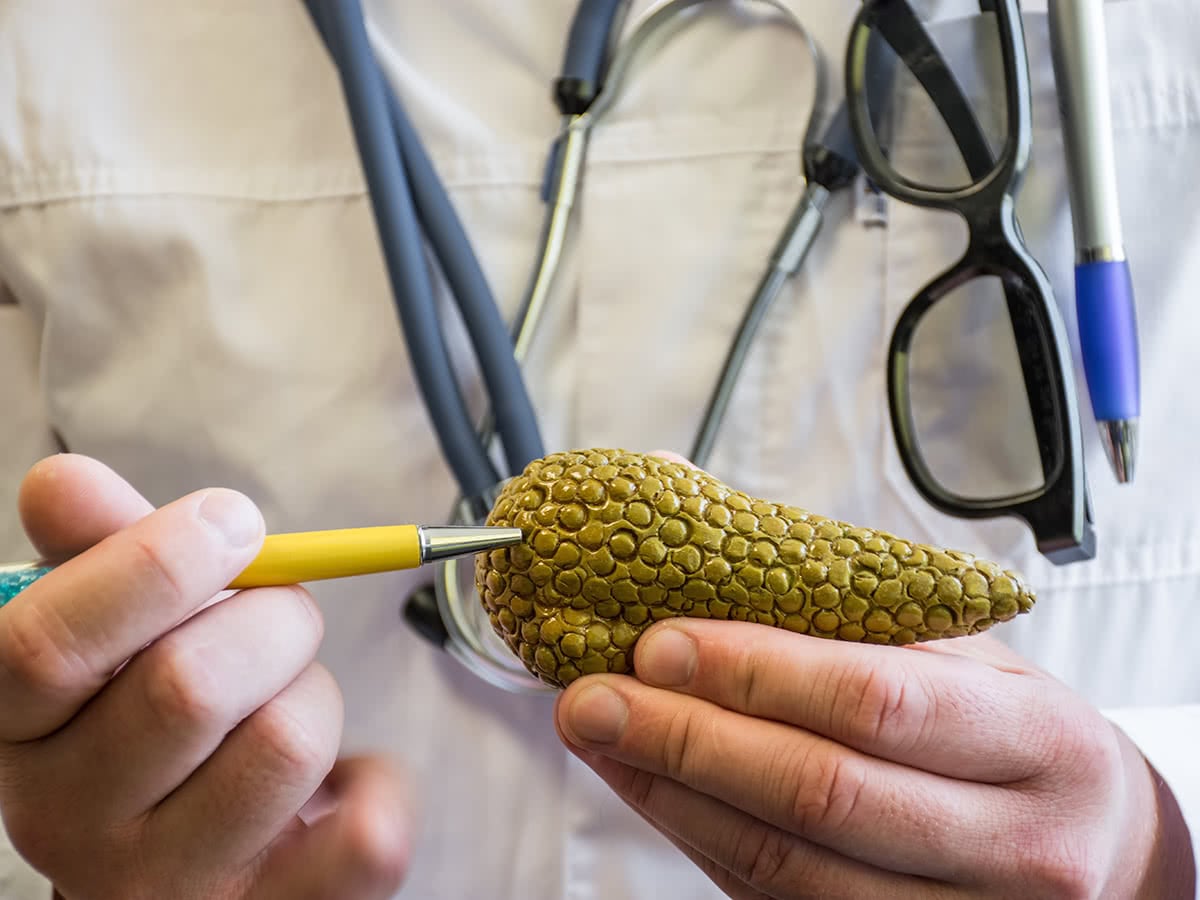Introduction
The pancreas is an organ around 15cm in length which sits behind the stomach. Its primary role is to make and secrete fluid into the duodenum which helps with the digestion of food by breaking down large molecules into smaller components. It also manufactures two hormones - insulin and glucagon - which regulate blood sugar levels.
Pancreatic cancer occurs when some cells in the pancreas begin to reproduce unnaturally - these cancerous cells then continue to multiply and in some cases the cancer can then move to other parts of the body via the lymphatic system in a process called 'metastasis'.
Pancreatic cancer is the tenth most common type of cancer diagnosed in Australia, affecting slightly more men than women, and this type of cancer is the fifth most common cause of death from cancer in Australia.
Pancreatic tumours can take a number of different forms:
Mucinous Cystic Neoplasm
These growths are not always malignant and are most frequently slow growing, and can generally be surgically removed.
Serous Cystadenoma
This type is much more common in women than in men and affect primarily older people (i.e. over 70). These are mostly benign (i.e. non-cancerous).
Endocrine Neoplasm
These can be cancerous, and form in the area of the pancreas that produces insulin and glucagon. They account for around one in fifty cases of pancreatic cancer.
Exocrine Tumour
This type of tumour develops in the area of the pancreas that produces digestive enzymes. These tumours account for the majority of pancreatic cancer diagnoses (~90%).
The pancreas is often described as having a 'head',’neck’, a 'body' and a 'tail'. Most cancer affects the head (~60%), with 15% occurring in the body section and around 5% in the tail section.
Causes
Although the precise causes or causes of pancreatic cancer and not fully understood, there are a number of risk factors for developing the condition. These are...
- Family history. Certain gene mutations are believed to be implicated in 5-10% of all cases, including the BRCA2 gene and the genes responsible for Peutz-Jeghers Syndrome, Lynch Syndrome and Familiar Atypical Multiple Mole Melanoma. Research indicates that up to two thousand different types of genetic mutation may play a role in the development of the condition.
- Age. Pancreatic cancer is most commonly diagnosed in people over 70 years of age, and is very rare under the age of 40.
- Smoking (believed to account for one in four cases).
- Obesity.
- Diabetes.
- Consumption of red and / or processed meat.
Symptoms
As the pancreas is located behind the stomach, spleen and small intestine, it can be difficult to diagnose pancreatic cancer and the condition may not exhibit any symptoms until it is at an advanced stage. Where symptoms are present, they can include...
- Yellowing of the skin and / or dark-coloured urine (symptoms of jaundice, which is caused by a blockage in the bile duct).
- Pain in either the back or the abdominal area.
- Weight loss (that is otherwise unexplained).
- Appetite loss.
- Nausea / vomiting.
- Development of diabetes (this occurs in around 15% of people with pancreatic cancer).
Tests / Diagnosis
There are a range of different tests that are used to diagnose pancreatic cancer. These are of three main types...
- Blood tests.
- Imaging - this can include ultrasound, or a CT, MRI or PET scan.
- Tissue biopsy - this is the removal of a tissue sample for examination and can be done either via an endoscopy or a needle biopsy.
Treatment
Treatment for pancreatic cancer depends on many factors, including where the cancer is located in the pancreas and how advanced it is (i.e. what 'stage' cancer it is).
Options to treat the condition include:
Frequently these approaches are used in combination to provide the most effective treatment. Where the cancer is at an early stage, the aim is to completely remove all cancer cells. With later stage cancers this may not be possible, in which case treatment is focused on palliative care, that is relieving any symptoms caused by the cancer.





